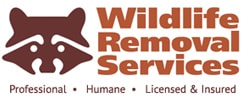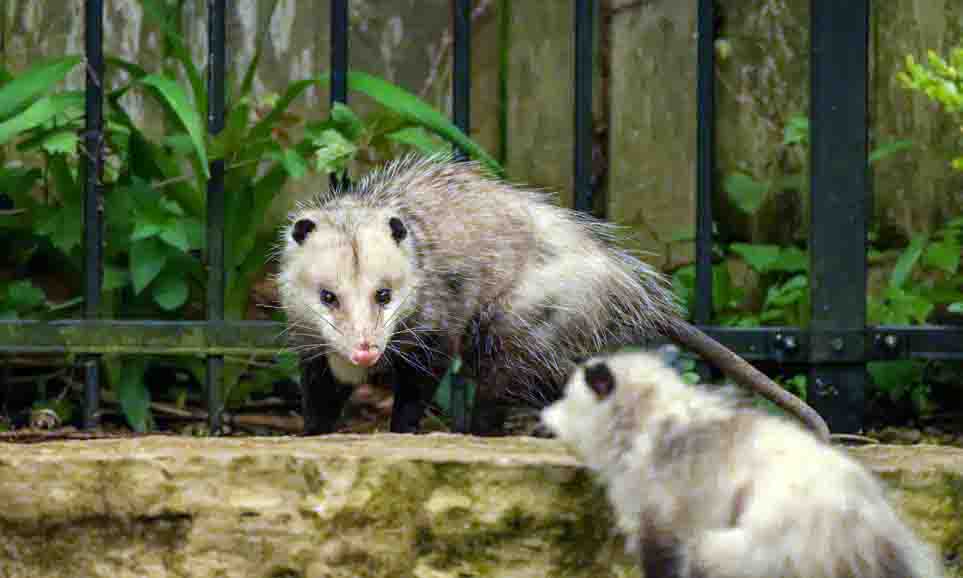General Facts About The Opossum
The Opossum which is commonly referred to as a possum is found all over South Florida, especially in Palm Beach County in the city of Boca Raton. In this article, we will help you understand the possum and make educated decisions if you happen to find them living on your property.
– Scientific Name: Didelphis
– Average Lifespan out in the Wild: 1 to 2 years
– Average Size: 4-15 lbs; 21-36 inches in length (including tail)
-Identifying Features: grey fur and white face; cat-sized body; hairless ears, round dark eyes, long pointy snout; four paws; a hairless, long tail that spans more than 1/3 of the total length of its body.
Related article: What Does Possum Poop Look Like?
Plays Possum
When these animals are harmed or threatened, they “play possum.” They mimic the smell and appearance of a dead or sick animal. They secrete a foul-smelling fluid out of their anal glands, have saliva foaming around their mouth, their teeth are bared, and their lips are drawn back. Although “play” makes it sound like something conscious, actually it is a completely involuntary defense mechanism as well as an automatic physiological response when they sense they are in danger.
Well-meaning people have killed many injured opossums after finding a catatonic animal and assuming the worst. If you find an apparently dead or injured opossum the best thing to do is to leave it alone in a quiet area and make sure it has a clear exit path. The opossum will likely regain consciousness in a few minutes or hours and be able to escape.
Opossum Habitat
Although opossums prefer to live in deciduous woodlands that have sources of water nearby – such as swamps or streams — they are very adaptable and can thrive in various climates and habitats. The most important elements for a possum’s home are shelter, water, and food.
Opossums do not build dens. They often find shelter in man-made structures such as attics, woodpiles, brush piles, hollow logs, and abandoned animal burrows.
Identify Opossum Damage
Although opossums are not naturally aggressive, they are resourceful and opportunistic animals. They eat whatever they are able to find and shelter wherever they find suitable – even if that is inside your house. It is critical to identify any signs of opossum damage as soon as possible.
Signs of opossum damage can include the following:
– opossum tracks: a clawless opposable toe on the side, back paw that has four clawed toes, and front paw that has visible claws and five toes
– torn insulation or ductwork
– opossum droppings inside of poultry houses, sheds, or attics
– raided poultry houses or chicken coops (possums eat chicks and eggs)
– stolen compost
– pilfered bird feeders, flower pots, or trashcans
1. Remove All Attractants
Since opossums are scavengers they will come into your yard looking for shelter and food. They are quite resourceful so will eat any type of animal or plant matter that is available. They will take shelter in any dry, covered area – from attics to brush piles. To keep out opossums, remove these attractants.
– Remove logs and woodpiles where opossums can take shelter
– Secure compost and garbage in containers that are animal-proof and have tight-fitting lids
– Clean barbecues and grills after each use
– Do not feed your pets outdoor. If it is necessary, remove any food that is leftover before dusk.
– Clean up fallen birdseed, fruit, and berries
TIP: Opossums look for food using their noses. Their sense of smell is very keen. Along with making sure your trash is secure, it is also very important to periodically clean the containers to remove any smells or leaked juices that might attract opossums.
2. Limit Accessibility
Most damage done by opossums happens when they obtain access to your poultry house, barn, or house. They may shelter inside your attic and excrete waste and destroy insulation. Or they might raid the chicken coop and steal the baby chicks and eggs. To minimize opossum damage you must be very diligent in limiting their accessibility to those areas.
– Fix any broken siding, foundations, screens, or vents that opossums can use to invade your house.
– Close all entryways off to basements, garages, sheds, poultry houses, etc.
– Trim any tree branches hanging within 10 feet of the roof – opossums are great tree climbers and are able to jump as high as 10 feet. That is how they often gain access to an attic.
3. Identify Damaged Areas
To choose which opossum control method you want to use and target how you will place it, you need to first identify the opossum’s whereabouts and general habits.
Destructive habits include the following:
– living under your porch/house
– nesting inside your crawlspace, basement, or attic – chewing through your electrical wires and/or destroying ductwork
– raiding poultry houses or barns – stealing chicks or eggs
– stealing birdseed, berries, and fruits
– pilfering tipped over trash cans
4. Choose the Best Control Method
After you have determined where the opossums are living as well as the type of damage that they are causing, select one or more of the methods below to solve the specific problem you are having.
Live Opossum Traps
One of the more effective methods that you can use to eliminate opossums – and the only thing you can do to get rid of them from inside your house – is to remove them manually using a live opossum trap. Keep these following tips in mind:
– Use a smelly bait-like fish to bait the trap.
– Opossums are nocturnal animals; your trap should only be set at night to help avoid catching other animals.
– The best time to trap opossums is before their breeding season starts in late fall or early winter.

